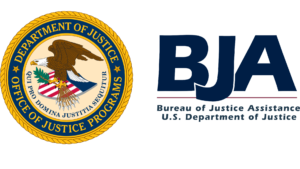Missouri Justice Reinvestment Initiative
In 2017, Missouri’s prison incarceration rate was eighth highest in the country, and violent crime had increased 13 percent between 2010 and 2016. If the rate of growth in Missouri’s prison population continued, the state would have needed to build two new prison facilities by 2021, which would have cost nearly half a billion dollars in combined construction and operating costs. To address these challenges, the state used the Justice Reinvestment Initiative (JRI), which resulted in legislation in 2018 aimed at reforming Missouri’s criminal justice system. This brief explores the effects of that legislation.
Improving Community-Based Treatment and Addressing Violent Crime
In 2017, Missouri’s prison incarceration rate was eighth highest in the country, and violent crime had increased 13 percent between 2010 and 2016.1 If the rate of growth in Missouri’s prison population continued, the state would have needed to build two new prison facilities by 2021, which would have cost nearly half a billion dollars in combined construction and operating costs.2
To address these challenges, the state formed the bipartisan Missouri State Justice Reinvestment Task Force in September of 2018 and worked with The Council of State Governments (CSG) Justice Center to conduct comprehensive data analyses and develop policy recommendations through the Justice Reinvestment Initiative (JRI). These efforts were funded by The Pew Charitable Trusts and the Bureau of Justice Assistance (BJA). BJA is a component of the Department of Justice’s Office of Justice Programs.
Enacted in 2018, House Bill (HB) 1355 authorized broad statutory and administrative changes aimed at reforming Missouri’s criminal justice system. After JRI, Missouri’s prison population declined by 28 percent, and the Parole Board completed an overhaul of its decision-making and release processes.3 The community-based treatment program, Improving Community Treatment Success (ICTS), is composed of providers who serve individuals on community supervision who are at high risk of revocation due to substance use disorders or co-occurring substance use disorders with mild to moderate mental health conditions.4 Individuals are served in 12 locations across the state.5
Since 2019, Missouri has invested $18 million to support the ICTS program and made significant investments in other areas. In 2021, the state appropriated over $25 million to support several improvements to its criminal justice system, including the investigation and prevention of violent crime, a crisis stabilization center, and community mental health and substance use disorder liaisons. As a result of these successes and actions, Missouri has increased access to substance use disorder treatment for people on probation and parole, focusing highest intensity services on those at the highest risk/highest need, and funded strategies to improve outcomes for people in the criminal justice system.
This brief outlines the following JRI statutory goals and implementation takeaways:
-
- Repurpose Community Supervision Centers (CSCs) to reduce recidivism.
- Implement evidence-based practices at the Department of Corrections (DOC).
- Build and strengthen community-based treatment systems.
- Modernize the parole decision-making process.
- Support local law enforcement efforts to address violent crime.
- Improve infrastructure and systems of support for victims of crime.
1. Repurpose Community Supervision Centers (CSCs) to reduce recidivism.
To improve outcomes on supervision, CSCs partnered with local stakeholders to create new evidence-based programs and reentry services to reduce recidivism.
In Missouri, CSCs are residential facilities that offer resources, programs, and services for individuals assessed at a high risk of reoffending and targeted to their identified criminogenic needs.6 There are currently 6 CSCs in Missouri, all of which have been redesigned to fill a gap in supportive resources offered to individuals on community supervision. CSCs offer day-reporting and residential capacity, serve as a sanction for noncompliance, and provide cognitive behavioral interventions and other risk-reducing programming, while serving as alternatives to revocation for people struggling to successfully fulfill the conditions of supervision.7 As shown in figure 1, most of the CSC population was at risk for revocation within 120 days of their admission.8
All CSCs offer cognitive behavioral intervention programs and have created partnerships with local community-based service providers, academic institutions, and faith-based programs to create opportunities for clients to connect to prosocial networks in the community. For example, in Fulton, Missouri, the CSC serves only women and features a gender-responsive curriculum with trauma-informed programming designed to effectively respond to women’s unique needs. To further support reentry, the Department of Social Services provides ongoing case manager support to certain CSC facilities to assist residents with applying for and maintaining benefits such as food stamps, child support, and identification documents. As a result, 90 percent of the CSC population was participating in a program with external partners by the end of fiscal year (FY) 2022 (see figure 1).9
Figure 1 Repurposed Community Supervision Centers

2. Implement evidence-based practices at the Department of Corrections (DOC).
To address the needs of people in prison and for people on supervision, the DOC implemented the use of a validated risk and needs assessment tool and expanded evidence-based practices and programs.
Following enactment of House Bill 1355, the Missouri DOC executed several administrative changes, including adopting and implementing the validated Ohio Risk Assessment System (ORAS) risk and needs assessment tools for people in prison and for people on supervision. As shown in figure 2, over 88,000 people were assessed using these tools through June 2020.10 Several cognitive behavioral intervention programs have been implemented in CSCs, and probation and parole officers have received training to support evidence-based programs for community supervision practices and case management and planning.
To expand the use of evidence-based practices, the Missouri DOC also established new systems for incorporating risk and needs assessment into case planning and case management and adopted new behavior response matrices for both institutional and community corrections that prioritize incentivizing positive behavior while also holding people accountable for negative behavior. In particular, with assistance from the JRI-funded Lantern program, the DOC focused on reducing community supervision revocations to prison by increasing risk and needs assessment fidelity, increasing use of internal administrative sanctions rather than violation reports filed with the court, reducing absconder violations, and targeting revocation clusters. Between January 2019 and June 2023, the number of average monthly revocations for technical violations decreased 30 percent. In addition, the use of more severe violation reports dropped by 17 percentage points, and the number of absconsion violations decreased 36 percent between January 2021 and June 2023.11
Figure 2 Number of Individuals Assessed in DOC Facilities Using New ORAS Tools: July 1, 2019–June 28, 2020

To support the sustainability of changes made through HB 1355, the Missouri DOC’s Office of Research, Planning, and Process Improvement created the Quality Assurance & Process Improvement unit to develop and adopt protocols to collect data on quality assurance. The newly created unit ties data entry and collection to staff training and ongoing quality improvement so that staff receive timely feedback about how their work impacts outcomes and how they could improve upon their individual and collective practices.12
3. Build and strengthen community-based treatment systems.
To better serve individuals on community supervision who are at high risk of revocation with behavioral health conditions, Missouri increased services through a pay-for-performance collaborative approach.
As directed in HB 1355 to improve recovery and recidivism outcomes, the Missouri DOC and the Department of Mental Health (DMH) partnered to establish, implement, and expand the first pay-for-performance collaborative approach to community supervision and behavioral health service delivery. Launched as a pilot program in three counties in 2018, the ICTS program serves individuals on community supervision who are at a high risk of revocation with behavioral health conditions. As of 2021, the program was serving 12 counties. Figure 3 shows an annual increase in the number of people receiving treatment through the ICTS program while the most recent average cost per person is just under $7,000.13
Figure 3 Average Cost of ICTS per Person, by Fiscal Year

4. Modernize the parole decision-making process..
To streamline the parole decision-making process, Missouri incorporated a grid system to reduce the number of release hearings by automatically approving release for certain eligible people.
Through JRI, the Missouri Parole Board updated its decision-making process to incorporate the new ORAS risk assessment scores and developed a new framework for release that incorporates time-to-serve guidelines, program completion, and institutional conduct into a grid system. This grid system greatly reduces the number of release hearings the board conducts by automatically approving release for people who have served the statutorily required percentages of their sentences and who were convicted of drug and certain nonviolent, lower-level felony offenses. As shown in figure 4, grid decisions comprised approximately 28 percent of release decisions through 2021.14
Figure 4 Parole Board Hearings: FY 2020, FY 2021, FY 2022

5. Support local law enforcement efforts to address violent crime.
To address violent crime rates, the Missouri Department of Public Safety (DPS) developed a grant funding approach, allocated through state appropriation funding, to meet the needs of law enforcement and create or improve local pilot programs to fight violent crime.15
As a result of HB 1355, the Missouri Law Enforcement Assistance Program was formed within the Missouri DPS to provide state financial and technical assistance to create or improve local pilot programs to fight violent crime. DPS worked with stakeholders to learn about the needs of law enforcement to effectively address violent crime by fielding a statewide survey, conducting six regional law enforcement focus group interviews, and working with nationwide experts to develop a grant funding approach to meet those needs. Missouri continues to invest in law enforcement and awarded $575,000 in 2022 for officer safety, equipment, and technology.
With nearly 350 agencies participating in the survey, responding to individuals with behavioral health conditions significantly topped the challenges law enforcement face in addressing violent crime. As shown in figure 5, additional needs were often associated with budget and crisis-level understaffing. Using survey results and summaries of the regional focus groups, a Violent Crime Reduction report was developed to help guide Missouri agencies to capitalize on existing resources and community collaborations.
Figure 5 Missouri Justice Reinvestment Initiative and Violent Crime Reduction – Most Significant Barriers for Law Enforcement Leadership, November 201916

Top Three Operational Barriers:
– Recruitment of qualified staff
– Ability to send staff to specialized training
– Staff turnover
Top Resources to Reduce Challenges:
– Additional officers to fill vacancies
– Additional staff officers to develop new units
– Local or regional grant specialists/coordinators
6. Improve infrastructure and systems of support for victims of crime.
Missouri enhanced services and systems for victims of crime to increase compensation approvals and reduce barriers for victim services.
HB 1355 prioritized improvements for victims of crime with the goal of removing compensation eligibility barriers and improving victim notification services. Missouri enhanced the notification system for victims; reduced barriers to accessing funding for victim services and Crime Victim Compensation; and developed a testing process, tracking mechanism, and notification system for sexual assault forensic exam kits. Changes to the Crime Victim Compensation Program were intended to increase applications received for compensation and sexual assault exams, increase approvals, and improve the tracking of approvals for quality assurance purposes. Compensation applications and the number of applications for sexual assault exams increased after the JRI reforms in 2018 went into effect; however, the COVID-19 pandemic disrupted the trend. As shown in figure 6, the number of applications for compensation and sexual assault exams in FY 2020 and in subsequent years dropped below the FY 2019 level.17
Figure 6 Applications for Compensation and Sexual Assault Exams Received

Additional Accomplishments Related to Reforms
To support ongoing implementation of evidence-based practices and recidivism-reduction goals, in 2020, the DOC engaged in an independent Justice Program Assessment (JPA) to evaluate programming in correctional settings across the state with the goal of understanding which currently available programming is aligned with research and best practices, which programming is responsive to risk and needs as assessed in the ORAS, and which programming areas need improvement. Results of the JPA were delivered to the DOC in June 2020, and implementation has started.
Subaward funding focused on the following:
■ Implementing evidence-based practices at the DOC to improve assessment and case planning.
■ Conducting training for judicial stakeholders to understand the rules, tools, and best practices promoted by JRI legislation and to assist in the formation of justice system regional partnerships to support the reforms.
■ Assisting local communities by funding effective approaches to violent crime and collaborating with judicial and regional stakeholders to improve justice outcomes.
Endnotes
1. Angela Gunter, and Alison Martin, Missouri: Monitoring Data Trends after 2018 Justice Reinvestment Initiative Reforms. (New York: The Council of State Governments Justice Center. 2018).
2. “Justice Reinvestment in Missouri,” The Council of State Governments Justice Center, accessed November 20, 2023, https:/csgjusticecenter.org/projects/justice-reinvestment/past-states/missouri/.
3. Ibid.
4. Ibid.
5. Ibid.
6. Missouri Department of Corrections Division of Probation and Parole, Supervision Strategies and Treatment Alternatives Booklet (Jefferson City, MO: Missouri Department of Corrections, 2023).
7. Ibid.
8. Ibid.
9. Ibid.
10. Ibid.
11. Rachael Druckhammer, Analysis of MO DOC data conducted by The Council of State Governments Justice Center, July 27, 2023.
12. Ibid.
13. Ibid.
14. Ibid.
15. Missouri Department of Corrections Office of Research, Planning, and Process Improvement, Annual Report to the Governor (Jefferson City, MO: Missouri Department of Corrections, 2021).
16. Missouri Department of Corrections Office of Research, Planning, and Process Improvement, Annual Report to the Governor (Jefferson City, MO: Missouri Department of Corrections, 2020).
17. Ibid.
Project Credits
Writing: Erin Thorvaldson and Kendric Holder, CSG Justice Center
Research: Angela Gunter, CSG Justice Center
Advising: Alison Martin and Ellen Whelan-Wuest, CSG Justice Center
Editing: Leslie Griffin, CSG Justice Center
Design: Jessica Rusher, The Council of State Governments
Web Development: Yewande Ojo, CSG Justice Center
Public Affairs: Kevin Dugan, CSG Justice Center
Acknowledgments
This project was supported by Grant No. 15PBJA-21- GK-04348-JRIX awarded by the Bureau of Justice Assistance. The Bureau of Justice Assistance is a component of the Department of Justice’s Office of Justice Programs, which also includes the Bureau of Justice Statistics, the National Institute of Justice, the Office of Juvenile Justice and Delinquency Prevention, the Office for Victims of Crime, and the SMART Office. Points of view or opinions in this document are those of the author and do not necessarily represent the official position or policies of the U.S. Department of Justice.
Contact
Paul Nichols
Deputy Program Director | CSG Justice Center,
pnichols@csg.org

The Justice Reinvestment Initiative (JRI) is a data-driven process funded through a public-private partnership between the Bureau of Justice Assistance (BJA), a component of the Department of Justice’s Office of Justice Programs, and The Pew Charitable Trusts. JRI aims to improve public safety by helping states make their justice systems more fair, effective, and efficient as they direct resources to address the complex factors that drive crime and recidivism.

The Council of State Governments (CSG) Justice Center is a national nonprofit organization that serves policymakers at the local, state, and federal levels from all branches of government. The CSG Justice Center has provided data-driven analyses and policy options to policymakers in more than 30 states as part of the Justice Reinvestment Initiative.
About the authors


Almost half of all violent crime in Kentucky is rooted in domestic violence (DV), and nearly 40 percent…
Read More Key Findings and Recommendations from Kentucky’s Justice Reinvestment Initiative to Better Understand and Address Domestic Violence
Key Findings and Recommendations from Kentucky’s Justice Reinvestment Initiative to Better Understand and Address Domestic Violence
Almost half of all violent crime in Kentucky is rooted in domestic…
Read More










